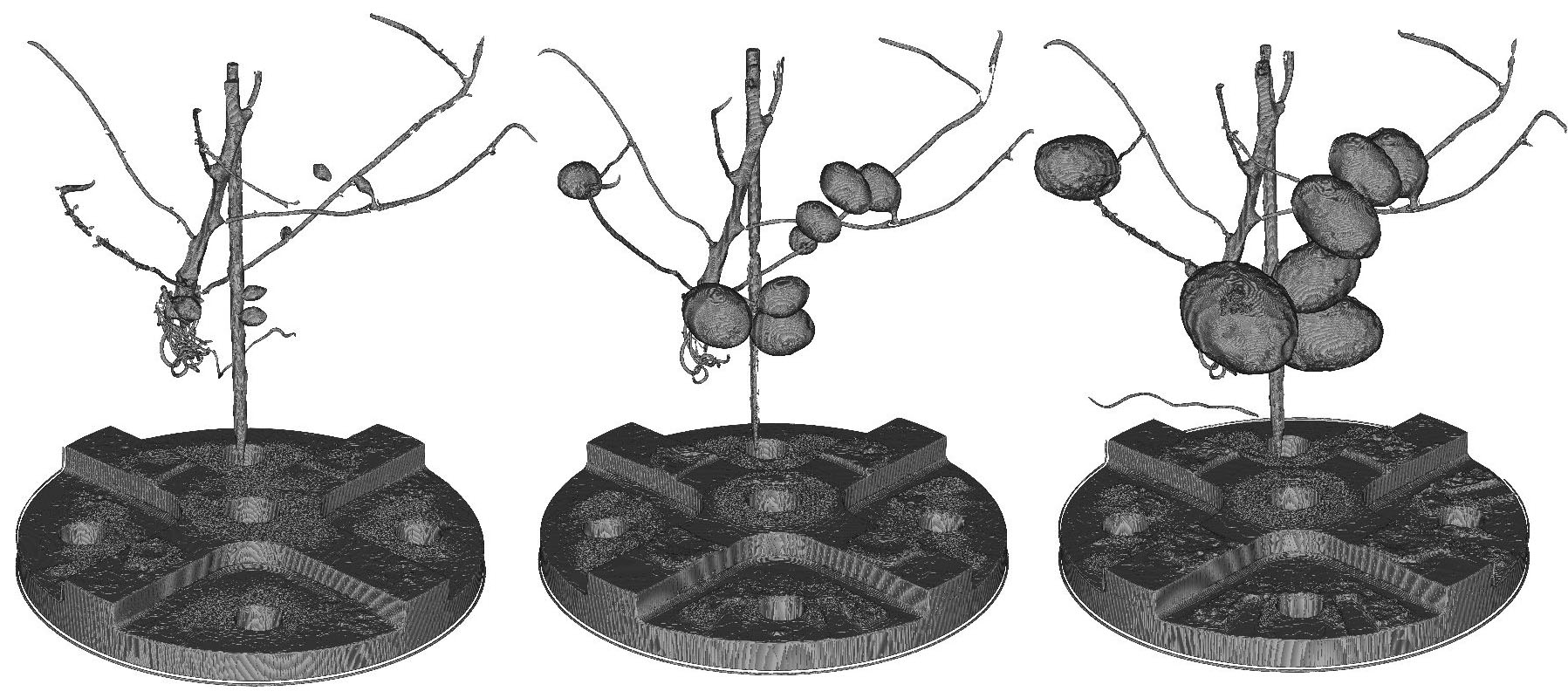The potato is an established crop with high earnings potential and great economic importance for German agriculture. On account of its botanic origin, it is a plant of cool, temperate climatic regions. High temperatures have a negative effect on the development of the plant. The goal of the HotPot project by Fraunhofer EZRT in cooperation with Friedrich-Alexander-Universität Erlangen-Nürnberg is to develop molecular markers and/or biomarkers for breeding industrial potato varieties with lower susceptibility to volunteer plants and second formation of shoots and therefore greater heat tolerance.
In the course of the project, various potato varieties that differ in their response to heat stress will be comprehensively phenotyped and profiled at different levels. In addition to the phenotyping of varieties subjected to heat stress under field conditions, 3D X-ray computed tomography (CT) is used to visualize tuber growth in a non-invasive manner in vivo under controlled conditions and thus allows a precise prediction of performance under heat stress. This enables the subsequent correlation of gene expression and metabolite patterns with tuber growth under heat stress conditions. By means of transcriptome and metabolite analyses, researchers characterize transcriptional and metabolic changes that correlate in a stable manner with the response to heat stress in the individual genotypes.
Heat stimulation has negative consequences for potato growth. The tubers of many varieties cease growing in girth when ground temperatures exceed 27 °C over several days. Usually this induces temporary seed dormancy as well. According to current estimates, average annual temperatures will rise in the period from 2071 to 2100 by 1.5 to 3.5 °C compared to the reference period from 1961 to 1990. Several forecasts predict that climate change in Germany will lead to yield reductions in the potato harvest of over 20 percent unless countermeasures are taken that encompass both breeding and practical cultivation.
The genotypic and phenotypic characterization of tetraploid populations of potato breeding material provides a rich source of information for research questions and practical studies. With the results, scientists can establish the principles of the inheritability of heat tolerance. The information and bioinformatic tools obtained from the project can be transferred to other potato populations. They are particularly useful for analyzing ex situ gene banks in which phenotypic evaluation is a limiting factor. The aim of the project is to clarify the molecular and physiological mechanisms that underlie the contrasting heat stress responses of different potato genotypes. It combines biochemical and genomic approaches with non-invasive phenotyping technologies for the first time, in order to clarify the molecular foundations of the heat stress response in the potato. Diagnostic markers for heat stress tolerance that are developed in the course of the project can be used to characterize natural populations of wild, tuberous varieties. The ability to predict the performance of crop plants in a non-invasive manner represents an important new technology in plant breeding. Its participation in the project allows Fraunhofer EZRT to develop image processing and evaluation algorithms for determining the volume of plant organs in their natural environment. It is expected that these algorithms will be applied to a range of plants and breeding questions, which will open up new research fields and market segments.
In a time frame of 10 to 15 years following the end of the project, the application of the biomarkers and molecular markers developed in the project in current breeding programs will lead to a substantial improvement in heat stress tolerance in the variety spectrum. This will make it possible to reduce the sizeable failures in potato crops that occur some years in Central Europe, particularly during the early summer heat. Furthermore, such genotypes are ideally suited for supplying new markets with modern, high-performance varieties – particularly areas in Eastern Europe with continental climates and regularly occurring hot periods.
